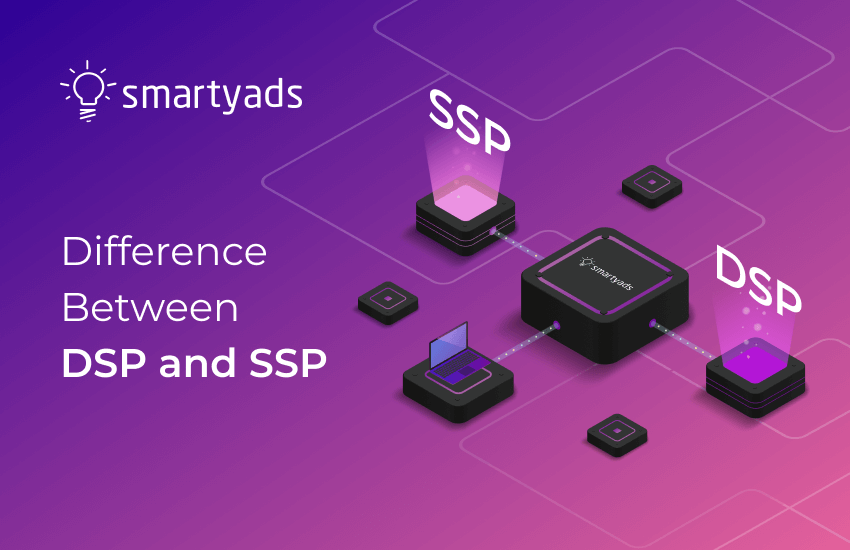Despite all the socio-economic changes in the world, the digital advertising industry continues to rise and develop. Throughout recent years the media-buying process between advertisers and online publishers has been mostly represented by programmatic advertising. This trend is unlikely to change in the near future.
By 2021 programmatic digital display ad spending is projected to increase by 16.5% according to Emarketer. In other words, it will reach $79.75 billion in the United States. Such a trend shows that programmatic will most likely continue to be a profitable opportunity for both advertisers and publishers in the years to come.
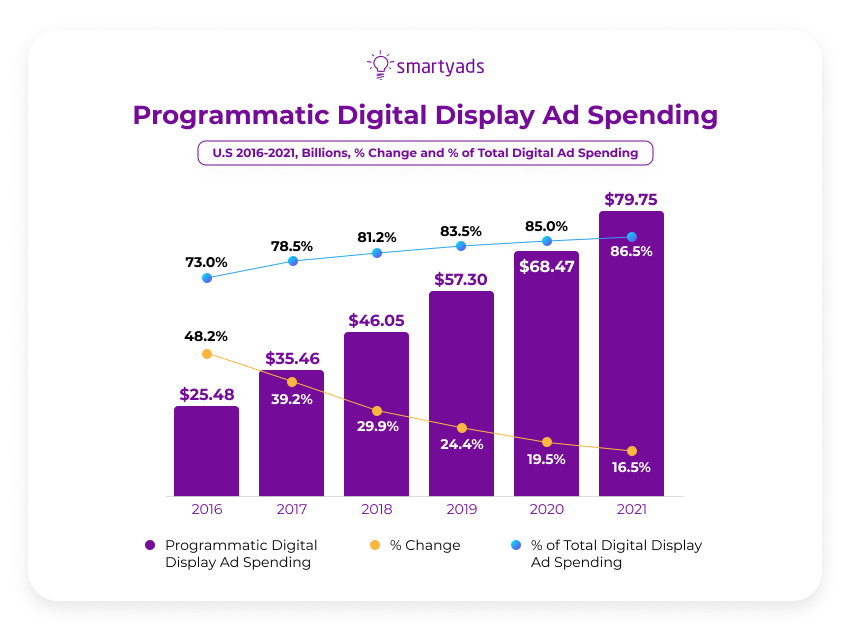
When stepping into the world of programmatic and real-time bidding, it is crucial to understand basic concepts and the general structure of the programmatic ecosystem that enables buying and selling digital ads. DSP, SSP, DMP, CPC, PPC… all these abbreviations can seem like a complex world at a first glance. But once we start to gather knowledge and define platforms like SSP (supply-side platforms), DSP (demand-side platforms), and others, each new term will become easier to understand. DSP and SSP are the most important platforms for launching the best display ad campaigns and monetizing inventory. Also, advertising agencies may use different ad exchanges to buy ad impressions.
Let’s start with exploring definitions and then proceed to find the difference between DSP and SSP.
What is a demand-side platform?
DSP or the demand side platform is a kind of software developed specifically for programmatic media-buying to help advertisers buy the most relevant ad impressions across the web for the best possible prices. With the help of DSPs, advertisers can quickly find suitable ad inventory, purchase or bid on it and display customizable ads to the target audience — all of it within seconds in real-time. DSPs also make it possible to post different ad formats.
Ad exchanges, ad networks, SSPs... DSP connects to these inventory-gathering platforms, so there is always plenty of digital ad inventory to choose from. A DSP (demand-side platform) is a technology that provides access for an advertiser to all these inventory sources using a single interface and buys ad space of their choice.
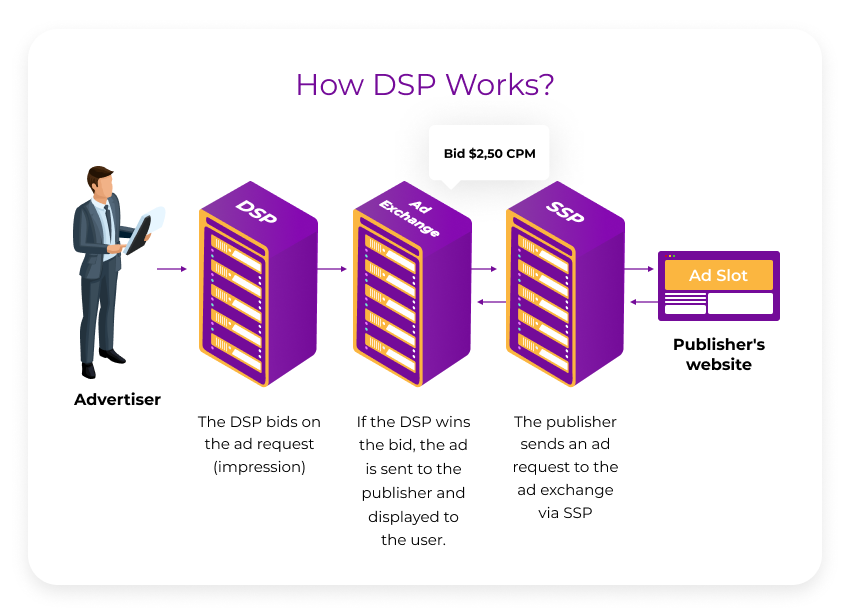
The inventory will be categorized by the most important features. For example, with SmartyAds DSP demand-side platform one can focus on formats and choose among banners, rich media, native ad formats, etc. At the same time, there are also DSPs that are focused on some specific industry niches or premium/remnant inventory, so one can opt for these segments if their business goals demand such a strategy.
Demand-side platforms can be sometimes mistaken for other ad tech platforms like data management platforms, ad networks, and others, nevertheless, these have different features, and perform different functions. To help you avoid such confusion, let us briefly review these differences.
What is the difference between…
The main distinction between DSP and DMP is their purpose. DSP is a tool utilized to buy ad space programmatically from different publishers across various platforms. DMPs are data management platforms, so their main purpose is to help advertisers collect and analyze data from various sources and use it for building a programmatic ads strategy. For this, DMP is integrated with DSP.
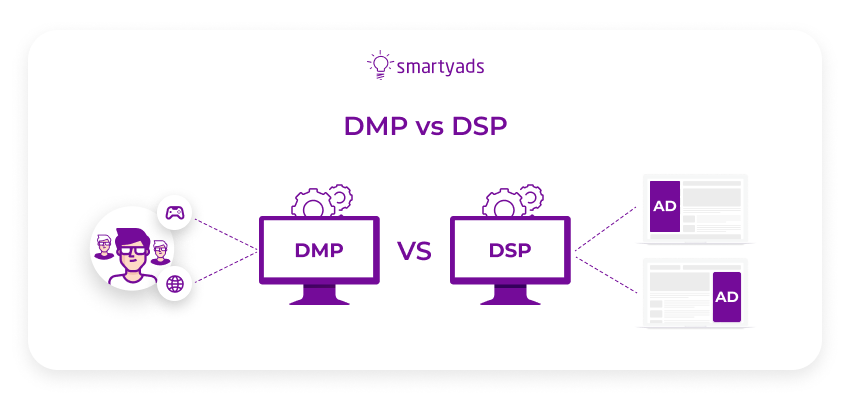
Here both platforms stand for an important part of the programmatic buying process, but each one is for a different one. DSP is a platform that is used by advertisers to buy inventory, while multiple ad networks and ad exchanges are the places where DSP, SSP, and other platforms connect. In particular, ad networks can buy, sort, and classify ad impressions, then sell them in a bulk to advertisers interested in reaching a relevant audience segment.
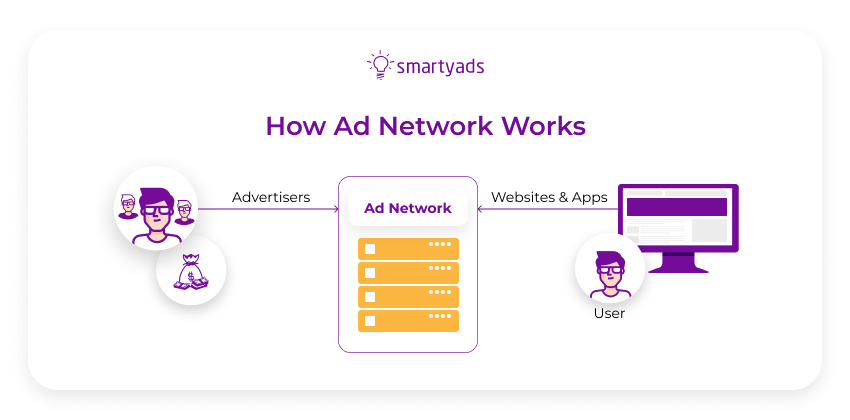
- DSP vs ad exchange?
To make it easier to explain, ad exchanges are open marketplaces where publishers sell ad inventory, and media buyers bid on ad impressions directly. Thus, advertisers and publishers can trade on the ad exchange without middlemen and thus, excessive commissions. DSPs, meanwhile, offer access to multiple ad exchanges and ad networks.
SSP vs DSP: the difference in their work and specifics of DSP
To better understand the difference between SSP vs DSP, and other platforms, let's take a closer look at how a demand-side platform work. A typical DSP should look like an interface where advertisers can build a campaign and set up all the desired parameters regarding the inventory and targeting options.
Once the data about audiences is configured in the settings of the data management platform, the advertiser can target people of particular ages, incomes, or gender.
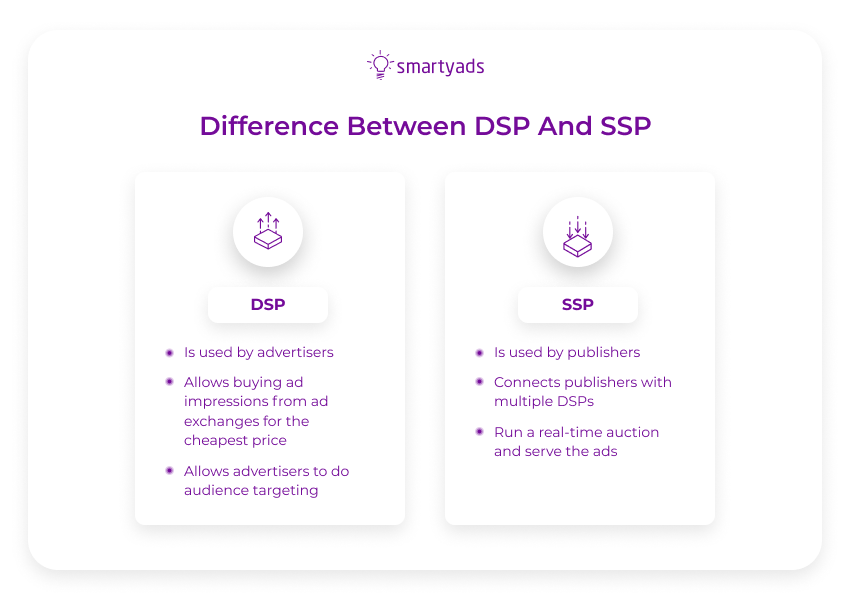
The DSP distributes ads according to the selected criteria. To enable this distribution, DSPs analyze all the available inventory and then bids on the most relevant. If it wins the real-time bidding auction the ad is getting sent to the SSP. Subsequently, the ad of the highest bidder is displayed on the publisher's website/app's ad space.
What is a supply-side platform?
Supply-side platform SSP is an ad tech software created for publishers to manage and sell their digital ad inventory via real-time bidding or other programmatic deals. SSPs have convenient interfaces to help publishers optimize their inventory, future ad space, and format, as well as price per impression.
Similarly to DSP, SSP provides access to multiple ad networks, exchanges, and demand-side platforms. They automatically match the publisher’s inventory with relevant ads from interested advertisers. Such an automated way of inventory filling often helps to effectively monetize website traffic and optimize the yields of publishers.
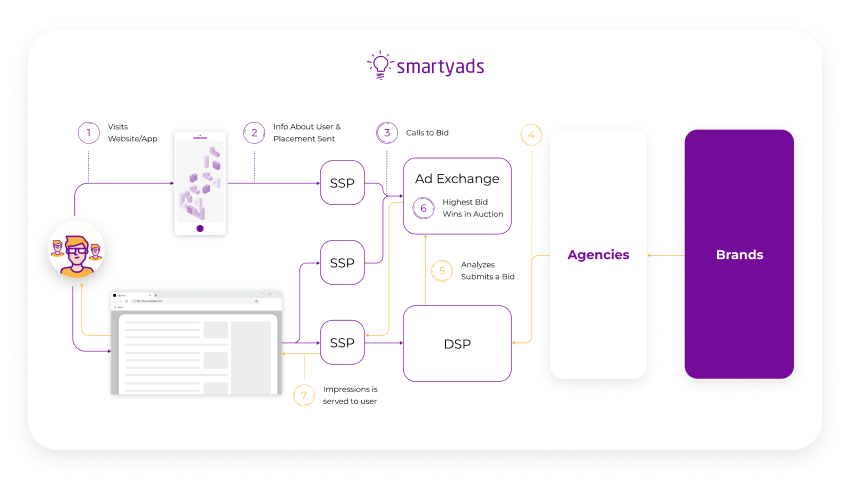
There is one more crucial detail for contrasting SSP vs DSP. SSPs usually accept publishers whose inventory meets specific requirements established by each platform individually. For example, some SSPs focus on inventory from narrow niches or premium inventory exclusively. Each SSP usually has its own guideline, but the basic requirements for any general SSP include:
- Sufficient traffic
Typically, the website should be active for a minimum of six months and get sufficient traffic; usually around 250 unique visitors per day, although these requirements may vary across platforms. For instance, if you have around 300 000 monthly views you can register your inventory at SmartyAds SSP for free and start monetizing it right away.
- Useful original content
It is also important to note that your website should provide relevant original content and have at least 20 to 30 pages. It also mustn’t violate copyright or feature prohibited categories (e.g. drugs, gambling, pornography, or hate speech).
- User-friendly navigation
Mind that your website should also be user-friendly in terms of structure and navigation. Potential buyers should be able to get the information they are interested in without the need to wander across your website in search of a specific page or category.
- Formats and device support
Naturally, your website should support all the advertising formats you are going to offer your inventory for. If you want to monetize your website with mobile ads then your website should be optimized for mobile and tablet environments. Then the ads will be properly displayed on the right ad space and the page loading speed won’t be affected.
If your inventory satisfies all the requirements you can easily sell ads on your website or app with SSP and get revenue from programmatic media trading. We also recommend monitoring and analyzing your traffic in terms of demographics and audiences. This data is very valuable for launching advertising campaigns and can be shared with advertisers so that targeting could be more precise.
DSP vs SSP: the mechanism behind SSPs
DSP vs SSP: what are the differences in their work? Well, we’ve just revised the anatomy of DSPs and the definition of supply-side platform, let us now study the basic mechanism behind SSPs and their principles of work.
On the supply end, publishers register at SSPs and configure selling campaigns for their inventory. They set up the parameters of their inventory as well as information about their potential buyers. Then SSPs can automatically send requests to the DSPs and offer inventory in real-time bidding auctions in order to find suitable bids. SSPs can also feature direct and private marketplace deals (also available on SmartyAds SSP).
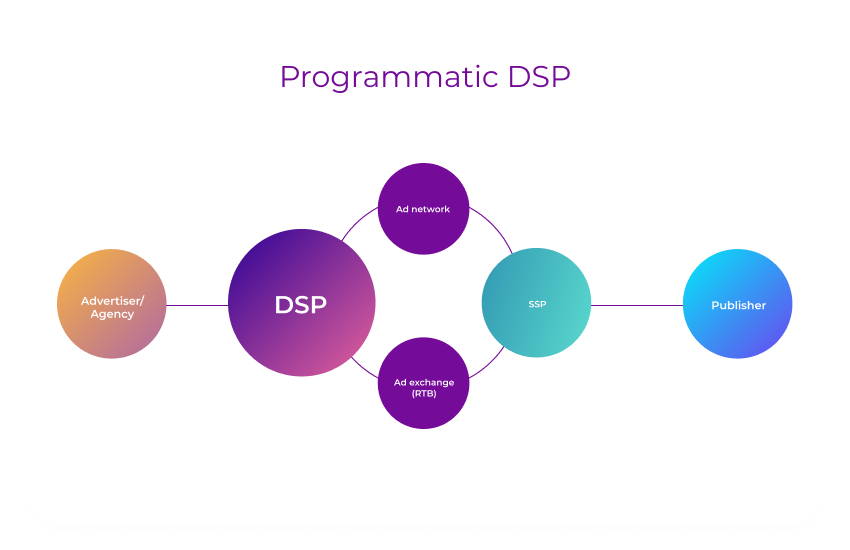
So what is the main difference between DSPs and SSPs?
Now that we know both the definitions and the principles of the work of DSP and SSP, we can contrast the two and see the main distinctions. Here is a comparative table to make the contrast between DSP vs SSP more visual:
| The platfrom | Demand-side platform DSP | Supply-side platform SSP |
| Main purpose | to help advertisers find and purchase relevant ad placements | to allow publishers to sell and manage their inventory |
| Role within the programmatic ecosystem | “demand” or buy side | “supply” or sell side |
| Function | connects advertisers with multiple SSPs, ad exchanges, and networks, allows advertisers to buy impressions with a specific target audience and display customizable digital ads with specific parameters | automatically offers inventory to multiple platforms such as DSP, ad agency, ad exchange, and online marketplace sells it for the best price, helps to optimize website monetization strategy, and increase revenue |
| Example | SmartyAds DSP | SmartyAds SSP |
The takeaways
To conclude, one can say that DSP and SSP are opposite sides of the programmatic media-buying spectrum. The difference is specifically notable if you contrast DSP vs SSP by their main functions.
SSP enables publishers to monetize their traffic and get the best price for it through real-time bidding or other auction competition. Real-time bidding saves lots of publishers’ time as it finds relevant advertisers, closes deals in milliseconds, and automatically fills up all available inventory.
In contrast, DSP is the demand-side software that helps advertisers to purchase necessary inventory and manage their advertising campaigns on the go.
With the help of DSP, advertisers can reach specific audiences with personalized messages at the right time and the right place and with a relevant message that resonates.
